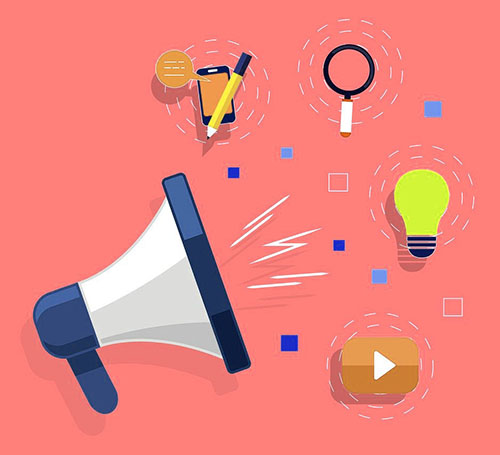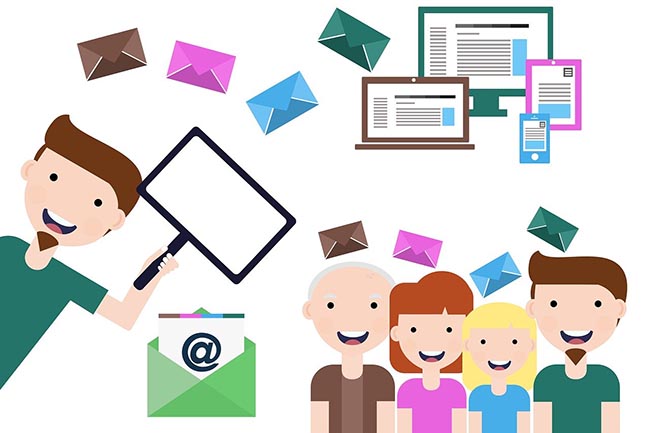Re-Engagement Campaigns: How to Win Back Inactive Subscribers

Have you ever noticed some of your email subscribers aren’t opening your messages like they used to? I ran into this snag myself. It’s pretty common for email marketers to struggle with keeping everyone on board.
While searching for answers, I discovered that about one in five email subscribers drift away over time. This pushed me to dig deeper for solutions.
I picked up a lot about re-engagement campaigns and their power to reel back in those lost contacts. During my journey, I uncovered strategies on pinpointing why folks might tune out and ways to spark their interest again.
This blog is all set to guide you through crafting emails that reignite the excitement in your readers. Let’s dive into making your emails must-reads again!

The Importance of Re-Engagement Campaigns
Re-engagement campaigns are vital for email marketing. They help bring back subscribers who have lost interest and boost customer loyalty.
Check out the Email Engagement Report for latest benchmarks & best practices
I found the Email Engagement Report very helpful. It offers valuable benchmarks and best practices for email marketing. These insights show trends in subscriber engagement. They help me understand what works and what doesn’t.
Using this report, I can improve my re-engagement campaigns. The data guides me as I try to win back inactive subscribers. Knowing how others are doing helps define my goals. With this information, I can create better strategies to reach unengaged contacts effectively.
What is a re-engagement campaign?
A re-engagement campaign aims to win back lost subscribers who have become inactive. It reaches out to these individuals through email campaigns designed to spark their interest again.
I find that the first step is identifying why these subscribers are losing interest. This helps me understand their disengagement.
To be effective, I must define and identify unengaged subscribers. Segmenting them allows for targeted and personalized emails that can catch their attention once more. A good re-engagement email campaign could include a series of messages or just one message meant to encourage interaction from those who have stopped reading my emails.
Running automated campaigns streamlines this process, making it easier for me to reach many inactive contacts at once. Now, let’s explore how I can create an effective re-engagement campaign.

Creating an Effective Re-Engagement Campaign
To create a good re-engagement campaign, start by finding out why people stopped engaging. Then, group your inactive subscribers to send them targeted messages.
Identifying reasons for disengagement
Identifying why subscribers lose interest is key. I need to understand the reasons for their disengagement.
- Lack of relevant content can lead to disinterest. If emails do not meet subscriber needs, they may stop opening them.
- Overwhelming frequency of emails can annoy users. Too many messages in a short time may cause them to unsubscribe.
- Poor email design or formatting makes it hard to read. If emails look cluttered, they become easily ignored.
- Subscribers might feel overwhelmed by promotional offers. Constant selling could drive subscribers away if they want valuable content instead.
- Changes in interests or needs can also cause disengagement. What interested customers before might not excite them now.
- Technical issues like broken links can frustrate readers. If they can’t access what they want, they’ll likely lose interest.
- Lack of personalization makes emails feel generic and uninviting. Personalized content helps reengage inactive subscribers effectively.
- Competing brands may attract attention with better offers or experiences. It’s essential for my campaigns to stand out amidst competition.
- Time constraints or distractions could keep subscribers from engaging with emails regularly. Life gets busy, and emails might fall off their priority list.
- Sometimes, subscribers forget why they signed up in the first place, leading to inactivity and lowered engagement levels.
Next, I will define and segment these unengaged subscribers for better targeting in my re-engagement campaign.

Defining and segmenting unengaged subscribers
Defining and segmenting unengaged subscribers is crucial for successful re-engagement campaigns. I want to reach the right people who have stopped interacting with my emails.
- I first look at my subscriber list. I check which users have not opened or clicked any emails in the last few months.
- This group is called unengaged subscribers. They need special attention to bring them back.
- I analyze their past behavior. Did they open emails but never click links? Did they buy something once and then vanish? Understanding these patterns helps me craft better messages.
- Next, I segment them based on activity levels. Some may have been inactive for a month, while others haven’t engaged for six months or more.
- Creating smaller groups helps send targeted campaigns to each segment. Each message can meet their unique needs.
- Automation simplifies this process. It allows me to set up campaigns that target specific segments without extra effort later.
- Offering discounts can attract some inactive customers back into my fold quickly.
- Highlighting new product benefits may spark interest in those who felt left out before.
- Giving control empowers subscribers who might want to change their email preferences or frequency.
- Following up ensures no one feels ignored after my initial outreach.
This approach key to building effective strategies for re-engagement emails will keep my audience connected and active moving forward!
Automating your campaign
Automating my re-engagement campaign makes the process easier. I set up a series of emails that reach out to inactive subscribers without doing it all manually. This way, I can save time and ensure that no one is forgotten.
Automation keeps the momentum going in my email engagement strategy.
I can use tools to schedule these emails based on when subscribers last engaged with me. It’s smart to track their actions to see who is unengaged and needs a nudge. With automated sequences, I can send targeted messages or special offers right when they might be most interested in coming back.
This helps win back disengaged subscribers effectively, moving us closer to creating compelling re-engagement emails next.
Crafting compelling re-engagement emails
Crafting compelling re-engagement emails is key to winning back inactive subscribers. I focus on grabbing attention quickly. Clear subject lines help get my email opened. In the email, I share valuable content and offers like coupons and discounts for inactive customers.
Highlighting new product benefits can spark interest too.
Using success stories makes the message relatable. People love knowing how others benefited from a product or service. I also give subscribers clear next steps, so they know how to engage again.
An effective re-engagement email campaign may include several emails to keep reminding them of value without being pushy.

Examples and Strategies for Re-Engagement Emails
Re-engagement emails can be a powerful way to win back inactive subscribers. You can offer discounts or share new product features. Show success stories that connect with your audience.
Let subscribers choose what they want to receive from you. Don’t forget to follow up and give them an easy way to say goodbye if they wish. To learn more about these strategies, keep reading!
Providing discounts and incentives
Offering discounts and incentives can be a powerful way to win back inactive subscribers. These strategies show I care about my audience and value their support.
- Discounts grab attention. A special offer can reignite interest in my brand. For example, I could give a 20% discount on their next purchase.
- Free shipping is a strong incentive. Many shoppers look for this perk when deciding where to buy. It encourages them to click through and shop.
- Exclusive offers build loyalty. I might share deals that only unengaged subscribers can access. This makes them feel special and more likely to return.
- Limited-time promotions create urgency. A deadline pushes subscribers to act quickly before they miss out. I could say the offer lasts only a week.
- Bundle deals provide added value. Offering multiple products at a lower price can tempt subscribers back to my store.
- Incentives can encourage feedback. I might ask inactive subscribers what would bring them back, offering discounts in exchange for their thoughts.
- Contests or giveaways draw interest, too. I could run a contest where inactive subscribers enter by engaging with my content again.
- Simple thank-you notes can also re-engage readers without heavy promotions. Including a small gift or discount shows gratitude for their past support.
- Showcasing popular products at discounted rates may spark curiosity about what they missed since they last engaged with my emails.
- Personalizing offers based on past purchases adds impact and relevance, making it more likely the recipient will consider returning to my brand.
Using these strategies helps boost customer retention rates and sparks subscriber reactivation through targeted efforts aimed at unengaged audiences in an email reengagement campaign.
Highlighting new product benefits
I want to share the benefits of new products in my re-engagement campaign. This can grab attention from inactive subscribers. They may not know about great features that can help them.
I will showcase how these products solve problems or make life easier.
Using clear language is key here. I focus on what makes the product special and useful. By showing success stories, readers see real results from other users. This approach helps build trust and interest once again.
Engaging my audience with strong messages can turn their attention back to my emails.

Showcasing success stories
Highlighting new product benefits can grab attention. Showcasing success stories keeps that interest going. I find sharing real customer experiences powerful. It helps inactive subscribers see the value of what they might be missing.
Success stories offer proof of how products help others. I can share quotes or testimonials from happy customers. Using these examples can inspire trust and spark curiosity in my audience.
Seeing someone else’s journey may motivate the reader to re-engage with my brand. By including these success stories, I create a strong connection that could lead to active participation again.
Giving subscribers control over their emails
After showcasing success stories, I focus on giving subscribers control over their emails. It helps them feel valued and listened to. Allowing subscribers to choose their preferences is key.
They can pick what types of emails they want or how often they receive them.
Clear options help reduce disengagement. When I let subscribers decide, they are more likely to stay connected. A good re-engagement email campaign includes these choices. It shows that I care about their interests and needs.
This approach can lead to better engagement strategies that truly win back inactive subscribers.
Following up and offering a way to leave
Following up is key in a re-engagement campaign. I send emails to remind inactive subscribers about what they are missing. These messages should offer value and show empathy. Some may want to leave my list, so it’s essential to give them that option.
I often include a clear way for subscribers to opt out in case they no longer wish to receive my emails. This approach builds trust and shows respect for their choices. By understanding each subscriber’s needs, I can craft better campaigns that focus on winning back interest while keeping the door open for those who want to go.
Conclusion
Re-engagement campaigns can bring back inactive subscribers. Understanding why they lost interest is the first step. Creating targeted emails keeps your message personal. Offer value and show empathy to connect better.
Through careful planning, these campaigns can help boost subscriber interaction once again.
Read email post: Top 10 Email Marketing Mistakes and how to avoid them